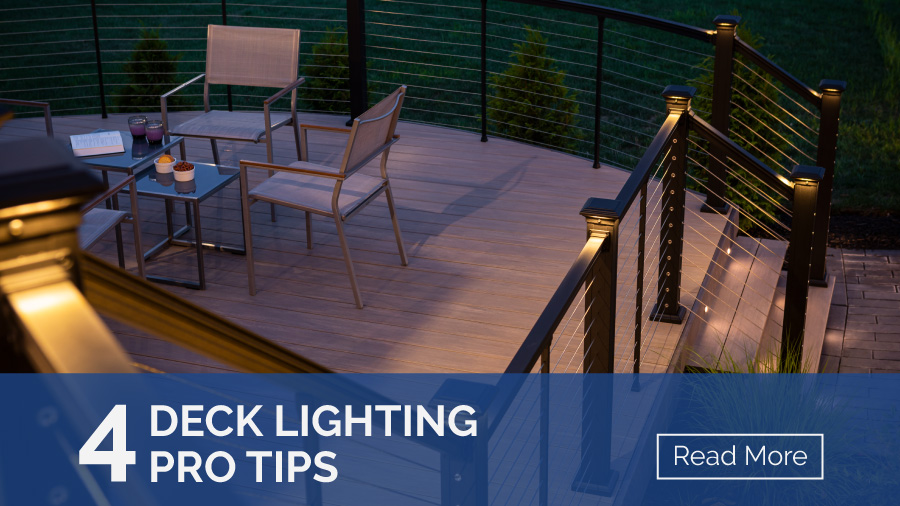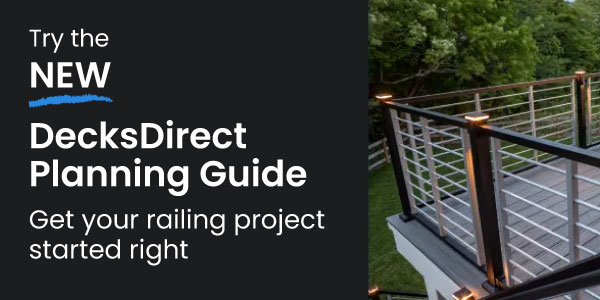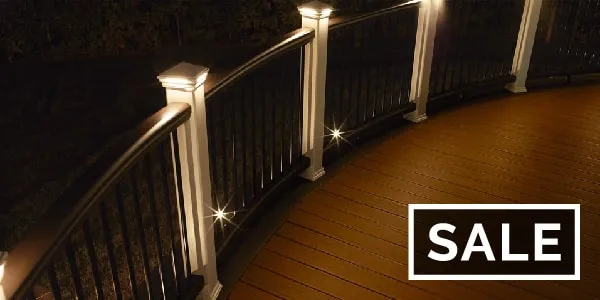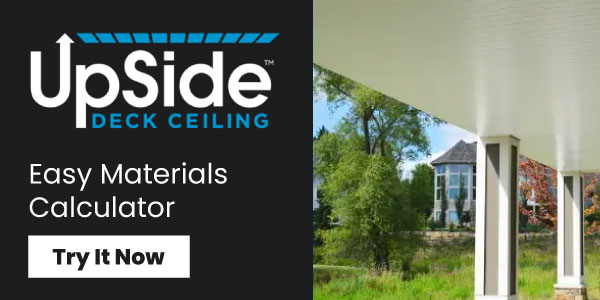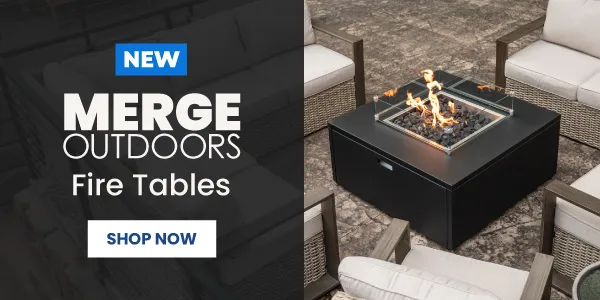How To Make Sure Your Deck Is Building Code Compliant
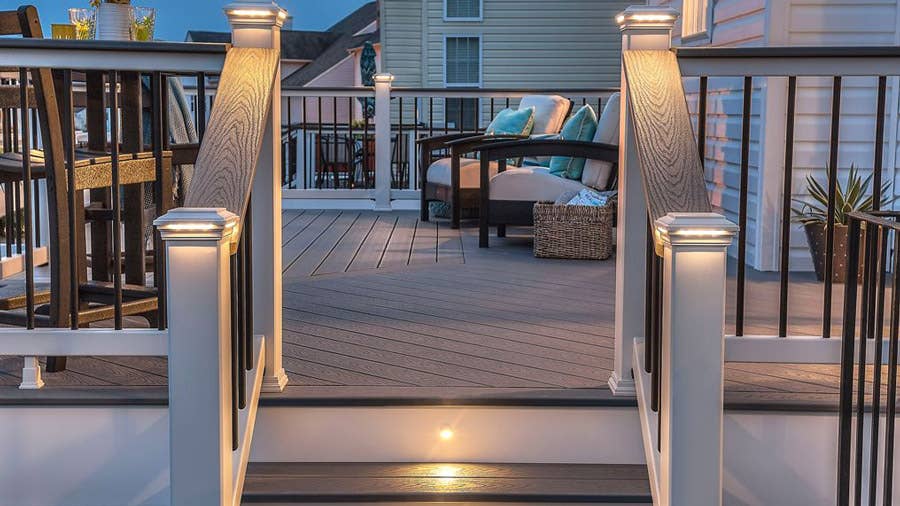
Building codes are vitally important. They're also hard to interpret. Why are such important safety rules written like they're a dry legal disclaimer at the end of an ad for prescription medication?
DecksDirect is here to make deck projects smoother and easier for the average homeowner, DIYer, and building pro. And that includes decoding building codes so you can easily make sure your deck is both safe and code-compliant.
In this article, we'll break down:
- What the International Residential Code (IRC) requires
- How to check your local building codes for extra requirements
- How to make sure your deck is extra safe for guests
Read on for more tips from our experienced deck project planners!
Table of Contents
- How To Meet Deck Stair Lighting Code
- Code Compliance vs Deck Safety
- How To Make Sure Your Deck Is Safe For Guests
How To Meet Deck Stair Lighting Code
- Check the IRC requirements
- Then check your local building codes
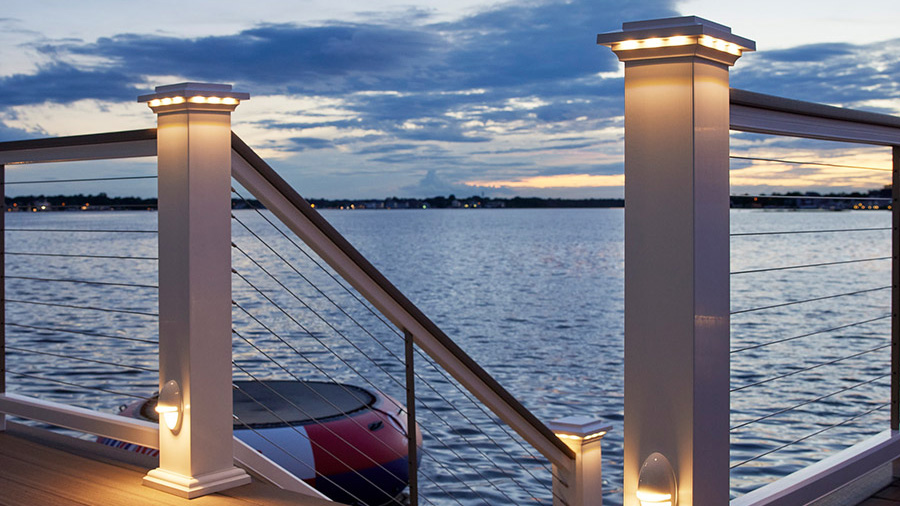
The specifics of building codes can vary from place to place, as certain cities or states have stricter code requirements than others. But there's one easy way to get a baseline for the minimum requirements that will apply just about anywhere: checking the International Residential Code (IRC).
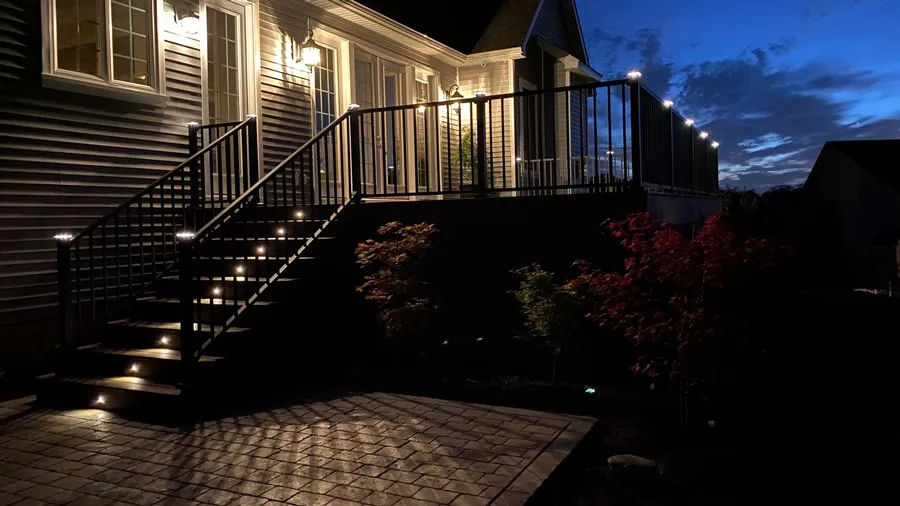
IRC Code
The IRC updates its international building codes every few years. Their most recent update was in 2021 and features one key requirement for decks: lighting up any outdoor stairways.
Here's the relevant section of the 2021 IRC:
- R303.8: Exterior stairway illumination Exterior stairways shall be provided with an artificial light source located at the top landing of the stairway.
In layman's terms: if your deck has stairs, you'll need a light source at the top landing.
That can be a light attached to your house, or mounted on your deck. But the key is that the light must be at the top landing of the stairs - not at the bottom or middle of the stairs. (You can still have lights in those places - but by themselves, they won't meet IRC standards.)
Local Building Codes
The IRC is a good starting point - but to make sure your deck is code-compliant, you'll also need to check for any state, city, or local building codes that apply. Some local codes are stricter than the baseline IRC code.
To check on local building codes, reach out to your city. They'll be able to explain any local, city, or state codes in better detail.
Code Compliance vs Deck Safety
There's a difference between code compliance and safety. Building codes are the letter of the law - safety is the spirit behind the law. Building codes are meant to make sure your deck is safe for you and your guests.
When it comes to your deck, safety is the most important element. And if you aim for safety, you'll typically meet - and exceed - building codes in the process. So how do you make sure your deck is not just code-compliant, but safe?
How To Make Sure Your Deck Is Safe For Guests
Here are five tips from our experienced deck project planners for prioritizing safety in your deck design:
#1: Install Lights In Your Stair Risers
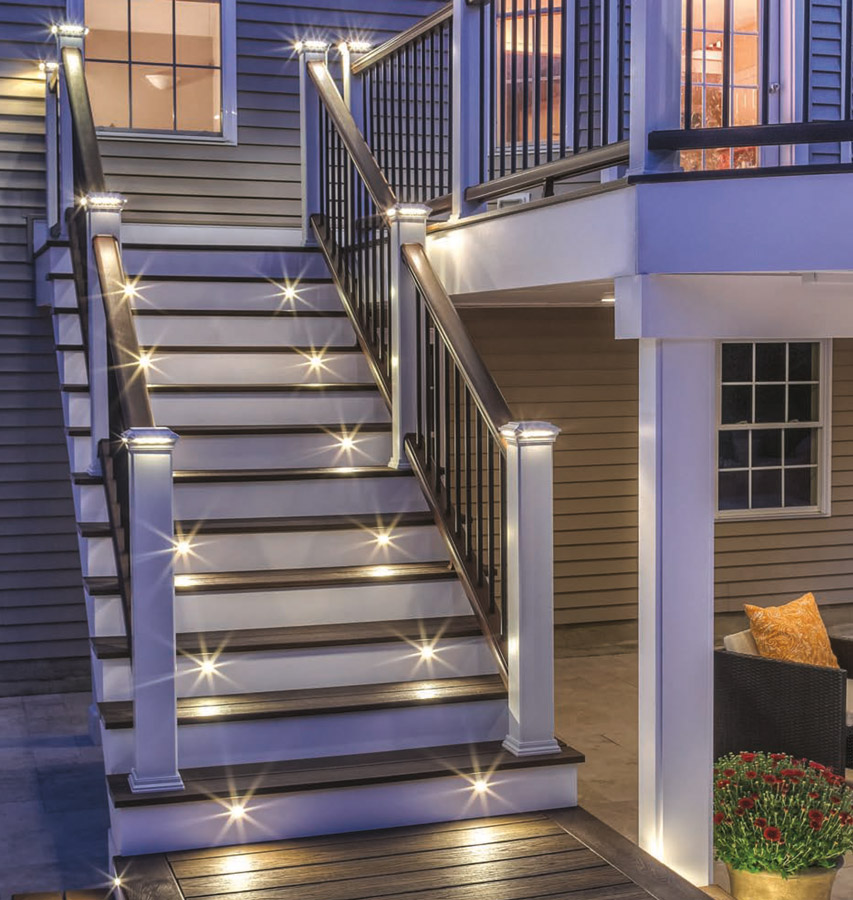
Stairs are at the center of deck lighting code, and for good reason - lighting up your stairs will go the furthest in preventing trips, falls, or injuries on your deck.
While code compliance calls for a light at the top of your stair landing, you can go above and beyond with stair riser lights that attach directly to your riser boards. They'll cast light directly onto each stair tread for totally safe footings - plus, they look amazing when lit up at night.
Shop Stair Lighting#2: Illuminate Boundaries With Rail Lighting
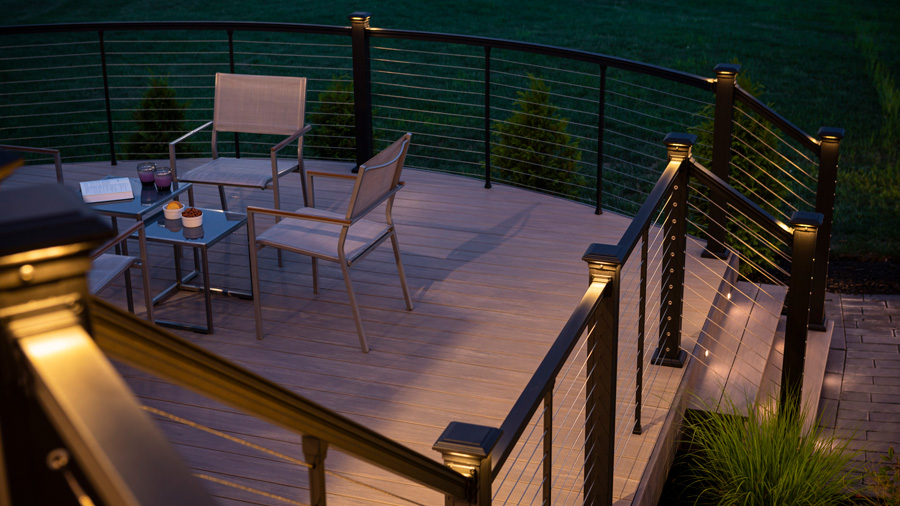
Besides your stairs, the next-most important thing to illuminate on your deck are its boundaries. It's important to show where your deck ends and your yard begins. Deck railing typically marks the perimeter of your deck, making it an ideal spot for boundary lighting.
The most common way to light up deck railings is with lighted post caps that sit on top of your railing posts. But you can also mount lights onto the sides of posts, or underneath your top rail.
The underrated bonus of rail lighting: if you light the edges of your deck, the illumination will cover most of your deck space, too, without requiring larger, harsher floodlights.
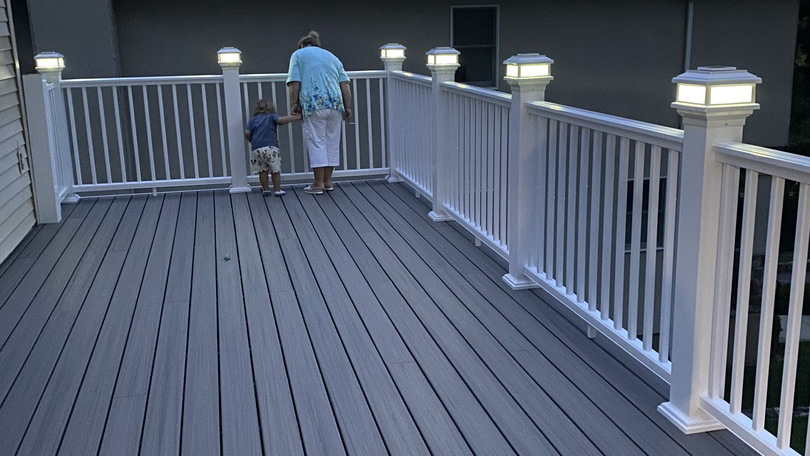
#3: Point Out Hazards
Tailor your lighting to your deck. If your deck's design has any unique or unexpected features - like the small step down in the deck below - these can post a tripping hazard to someone expecting a more standard deck layout.
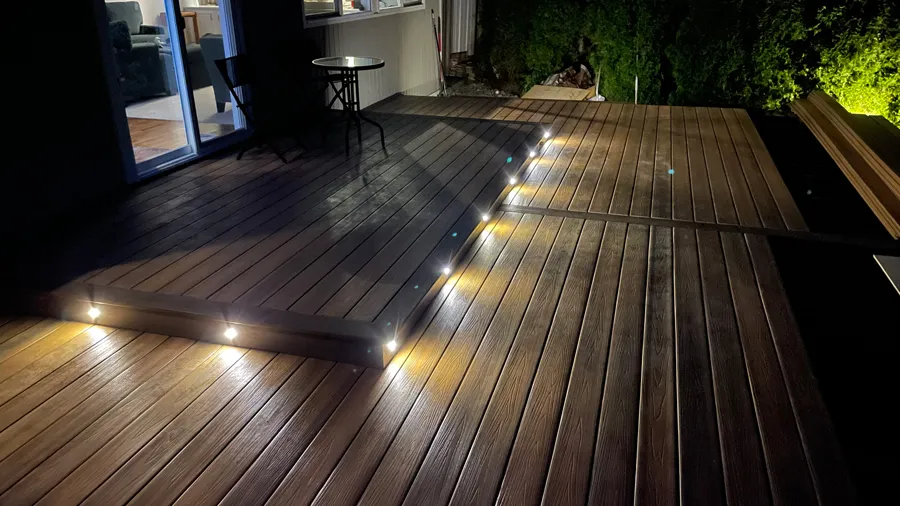
This deck does a great job illuminating the step with recessed stair riser lights.
Illuminating special features is also a great way to make your deck stand out by highlighting what makes it unique. Your deck can look like a one-of-a-kind wonder when lit up at night - and be extra-safe for your guests, too!
#4: Light Up Common Footpaths
You can extend the stair lighting principle one step further (pun intended) by lighting up common footpaths beyond your stairs.
Build your deck for the people who will use it. If you've got a direct line from a door over to a sitting area, you can bet most of your guests will follow that exact footpath. Lighting up that route will go a long way in preventing trips and falls.
You don't have to limit those footpaths to your deck, either. Or to human guests. Check out this deck and porch setup below. The grass tells the story: this family's pet dog has a clear walking route around the edge of the porch - and the lighting recessed into the fascia boards brightly illuminate that light for maximum visibility at night.
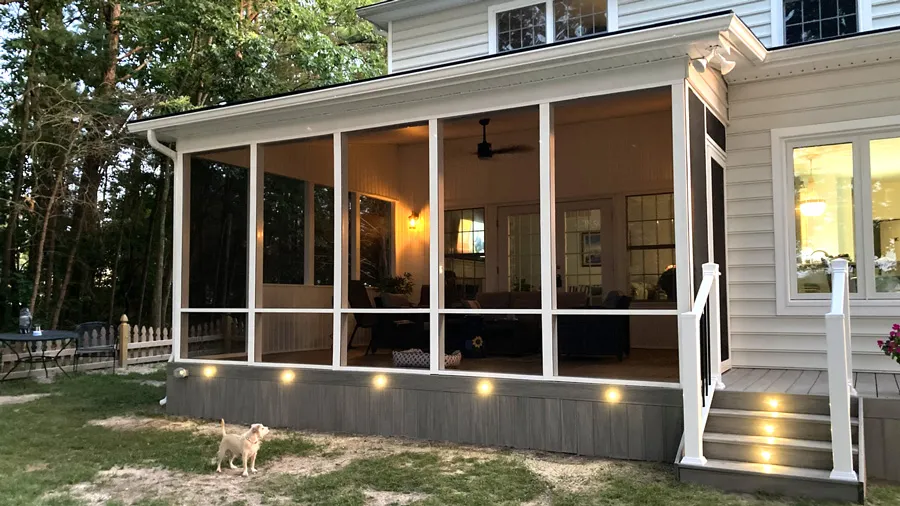
#5: Set Your Lighting To Turn On Automatically When You Need It
Lights don't provide any value when they're turned off. So it's important to make it easy to turn your lights on and off when you need them.
A timer, like the Photo-Eye Electric Timer by Aurora Deck Lighting shown below, can set your lights to turn on and off automatically. You can turn your lights on for a set amount of time (like 2 or 4 hours) and have them turn off when you're back inside and fast asleep.
Or you can set the timer to automatically sense the natural light in the area and turn the lights on at dusk and off at dawn.
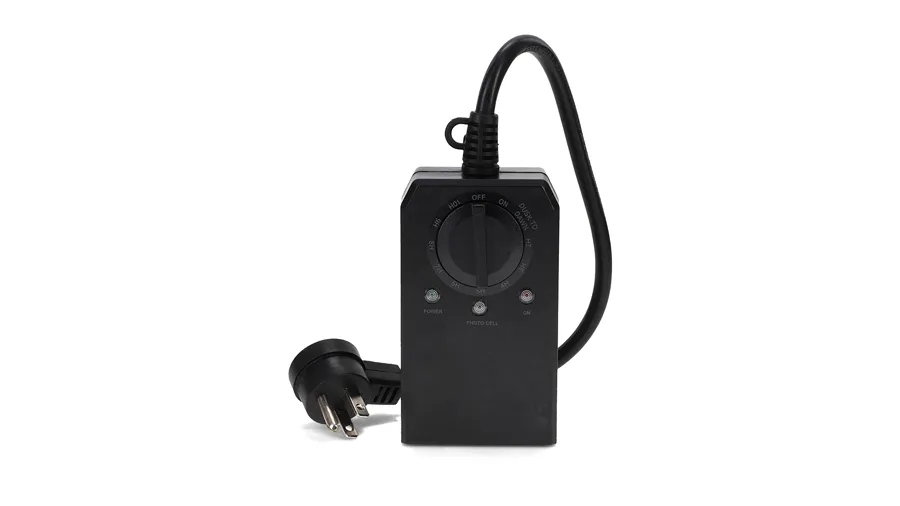
You can get even more advanced and control your lighting from your smartphone with a wifi-enabled device like the WiFi Controller by Trex, shown below.
You can turn lights on and off from your phone or tablet, plus set automated lighting schedules and adjust the brightness of your lights.
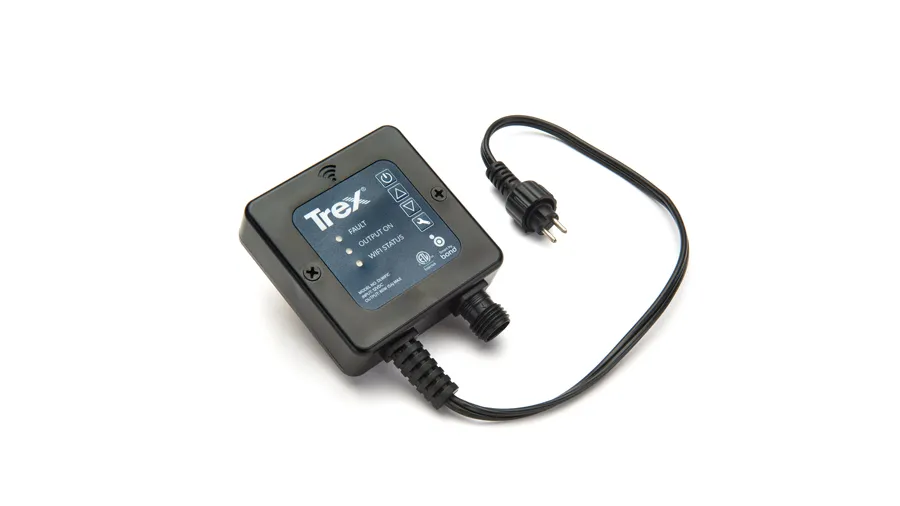
Planning a deck lighting setup is easier than you think! Check out our Easy Lighting Pro Tips to make things even easier.
